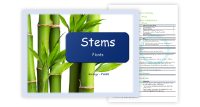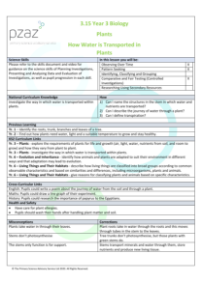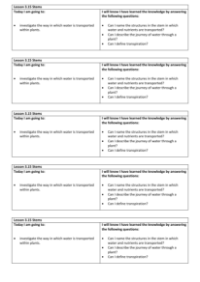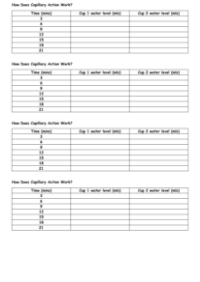Stems - Presentation

Science Resource Description
In an engaging biology lesson, students delve into the world of plant stems, exploring their structures and functions. The lesson aims to equip students with the ability to identify the parts of a stem responsible for transporting water and nutrients, describe the path water takes through a plant, and define the process of transpiration. The session begins with an insightful conversation between a student, Ryan, and his biology teacher, a qualified botanist, Mr. Malaka. During this exchange, Mr. Malaka explains the significance of stems in plants, highlighting their roles in positioning leaves for optimal photosynthesis, storing nutrients, providing support, and transporting water to leaves. He clarifies common misconceptions by stating that trunks in trees and the spiky parts of cacti are indeed types of stems, adapted to their environments. The conversation also introduces the concept of xylem tubes, which are vital for the transpiration process.
The lesson proceeds with practical investigations to further students' understanding. They observe how water travels through a plant's xylem tubes by conducting experiments with celery and carnations, noting changes in water movement and colour absorption. These activities are designed to demonstrate the role of xylem tubes in carrying water and minerals from roots to leaves and flowers. Students also explore how temperature affects the rate at which water travels within these tubes. The concept of capillary action is introduced, explaining how water adheres to fibres within paper and moves up the stem in plants, similar to how it travels through the tissue paper connecting cups of coloured water. By the end of the lesson, students should be able to articulate the functions of plant stems, the journey of water through a plant, and the principles behind transpiration and capillary action.






